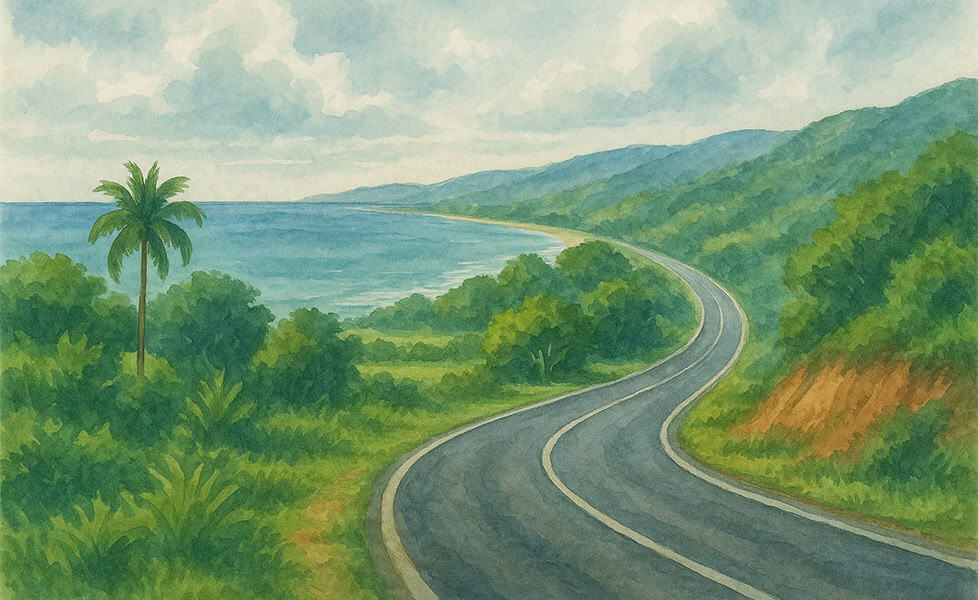The original Pan-American Highway heading south from San José once took a dramatic and daunting route. It passed through the old capital of Cartago and climbed the mountains before topping out at over 3,000 meters (10,000 feet) on the Cerro de la Muerte. From there, it plunged down toward San Isidro de El General and continued through the Zona Sur—200 kilometers of pineapple plantations, cattle ranches, Indigenous villages, and hardscrabble agricultural towns—until finally reaching the Panama border.
In the early 2000s, the Costa Rican government began construction on a modern alternative: a new coastal highway. Designed to bypass the treacherous mountain route, the road hugged the Pacific coastline and reconnected with the original highway in Palmar Norte. After more than 30 years of delays caused by bureaucracy, lawsuits, and corruption, the majority of the road was completed by 2008.
But one crucial piece remained unfinished. The 40 kilometers between Dominical and Quepos—half winding through palm oil plantations and half offering majestic ocean views—remained a brutal, unpaved nightmare. Compared to the sleek new highway, this stretch felt like an outhouse attached to a mansion.
During the rainy season, the road transformed into a muddy, potholed swamp. Drivers took their chances plowing through water that could conceal anything from a shallow puddle to a car-swallowing trench. In the dry season, annual grading improved the road just enough to reduce travel time to under an hour, only to turn it into a choking dust bowl thanks to the increased traffic.
Adding to the danger were the old railroad-era one-lane bridges—rickety, rusted, and barely holding together. In its final year before paving, one of those bridges collapsed completely. Drivers carved makeshift paths down to the riverbanks, crossing in single file at the shallowest points.
Finally, after nearly two decades, construction crews tackled the long-neglected stretch. Over 18 months, the battered path was transformed. When the road was officially completed, I was among the first to drive it. I rolled down my windows, let the wind rush in, and cruised at speeds once unimaginable on this route. My eyes welled up with tears—maybe from the wind, but also from the sheer relief and joy of a long-awaited dream finally realized.
Not long ago, I saw a Facebook post waxing nostalgic about the “good old days” of bone-rattling potholes and collapsed bridges. I’ll admit I miss some parts of old Costa Rica. But in this case, I just laughed and thought, No thanks!






